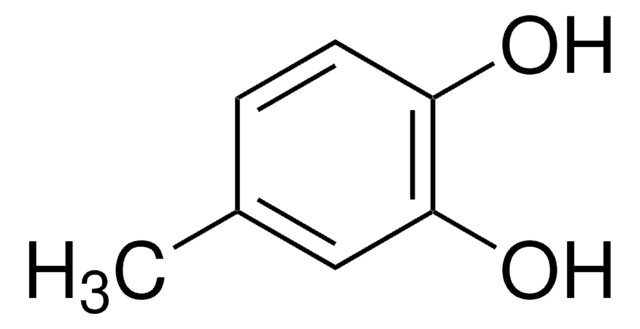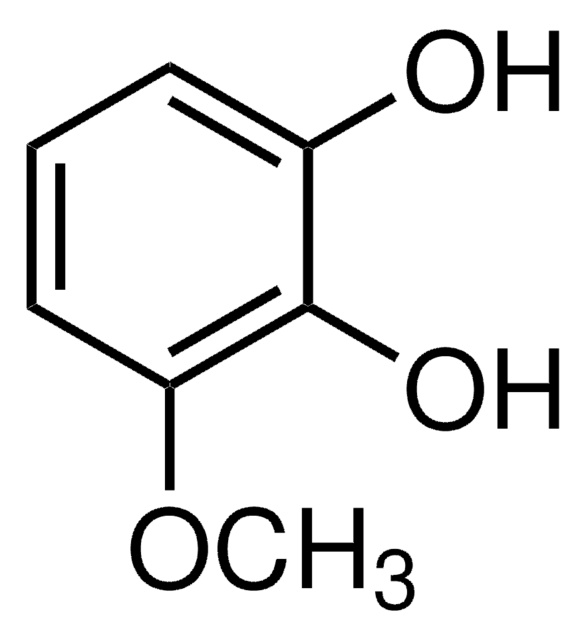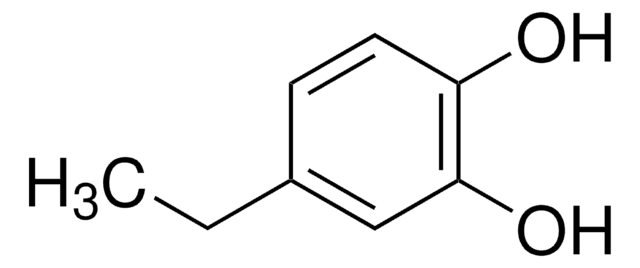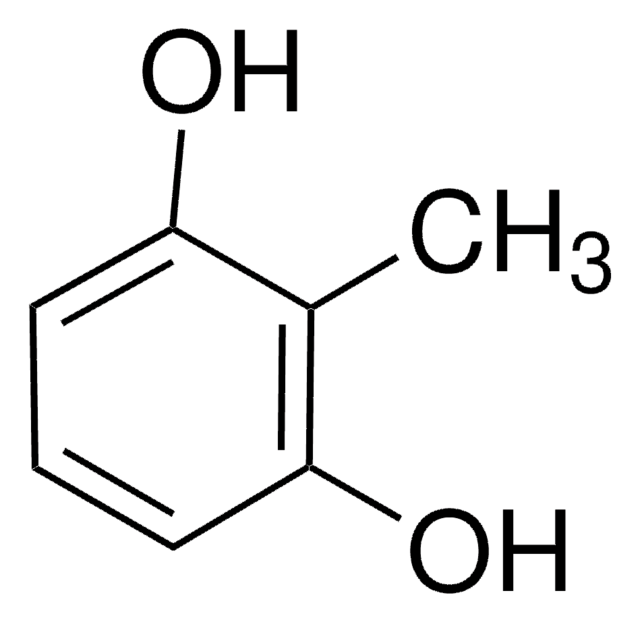Wichtige Dokumente
M34006
3-Methylcatechin
98%
Synonym(e):
1,2-Dihydroxy-3-methylbenzene, 2,3-Dihydroxytoluene, 2,3-Toluenediol, 2-Hydroxy-3-methylphenol, 2-Hydroxy-6-methylphenol, 3-Methyl-1,2-benzenediol, 3-Methyl-1,2-dihydroxybenzene, 3-Methylpyrocatechol
About This Item
Empfohlene Produkte
Qualitätsniveau
Assay
98%
bp
241 °C (lit.)
mp (Schmelzpunkt)
65-68 °C (lit.)
Versandbedingung
wet ice
Lagertemp.
2-8°C
SMILES String
Cc1cccc(O)c1O
InChI
1S/C7H8O2/c1-5-3-2-4-6(8)7(5)9/h2-4,8-9H,1H3
InChIKey
PGSWEKYNAOWQDF-UHFFFAOYSA-N
Verwandte Kategorien
Signalwort
Warning
H-Sätze
Gefahreneinstufungen
Acute Tox. 4 Oral - Eye Irrit. 2 - Skin Irrit. 2 - Skin Sens. 1 - STOT SE 3
Zielorgane
Respiratory system
Lagerklassenschlüssel
11 - Combustible Solids
WGK
WGK 3
Flammpunkt (°F)
Not applicable
Flammpunkt (°C)
Not applicable
Persönliche Schutzausrüstung
dust mask type N95 (US), Eyeshields, Gloves
Hier finden Sie alle aktuellen Versionen:
Besitzen Sie dieses Produkt bereits?
In der Dokumentenbibliothek finden Sie die Dokumentation zu den Produkten, die Sie kürzlich erworben haben.
Kunden haben sich ebenfalls angesehen
Protokolle
Separation of Resorcinol 50 mg/mL; Pyrocatechol; 2-Methylresorcinol; 4-Methylcatechol; 2,5-Dimethylresorcinol 50 mg/mL; 3-Methylcatechol 50 mg/mL; 4-Nitrocatechol 50 mg/mL
Unser Team von Wissenschaftlern verfügt über Erfahrung in allen Forschungsbereichen einschließlich Life Science, Materialwissenschaften, chemischer Synthese, Chromatographie, Analytik und vielen mehr..
Setzen Sie sich mit dem technischen Dienst in Verbindung.










